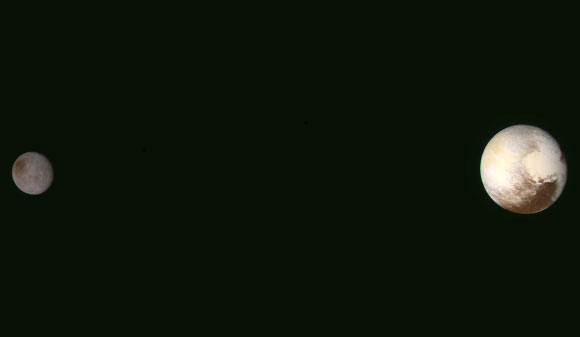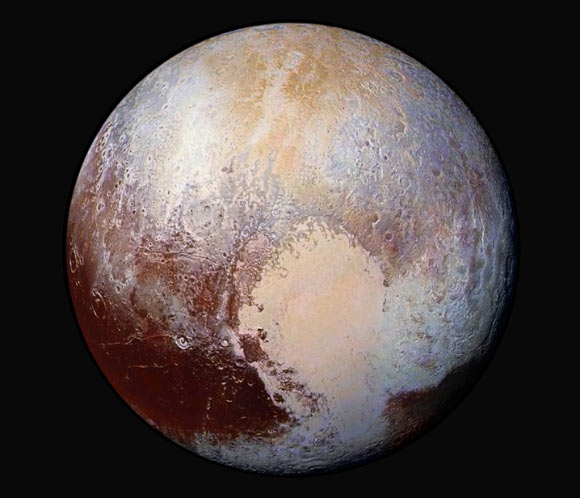This image of the dwarf planet and its largest moon was captured by New Horizons’ Ralph color imager on July 14, 2015, five hours before Pluto closest approach.

This image was taken at 2:49 a.m. EDT (06:49 a.m. GMT) on July 14, 2015, five hours before Pluto closest approach, with New Horizons’ Ralph instrument. The picture was snapped at a distance of 150,000 miles (250,000 km). Image credit: NASA / Johns Hopkins University Applied Physics Laboratory / Southwest Research Institute.
The image above highlights the contrasting appearance of the two icy worlds, sometimes referred to as a binary planet.
Pluto shows a wide variety of subtle color variations, including yellowish patches on the north polar cap and subtly contrasting colors for the two halves of Pluto’s Tombaugh Regio (seen in the upper right quadrant of the image).
Charon is mostly gray, with a dark reddish polar cap.
In order to fit the dwarf planet and its moon in the same frame in their correct relative positions, the image has been rotated so the north pole on both Pluto and Charon is pointing towards the upper left.
The image was made with the blue, red, and near-infrared color filters of Ralph’s Multicolor Visible Imaging Camera.
It shows colors that are similar, but not identical, to what would be seen with the human eye, which is sensitive to a narrower range of wavelengths.

Four images from New Horizons’ Long Range Reconnaissance Imager were combined with color data from the Ralph instrument to create this enhanced color global view of Pluto. The images were taken when the spacecraft was 280,000 miles (450,000 km) away. Pluto’s Sputnik Planum is suggestive of a source region of ices. The two bluish-white ‘lobes’ that extend to the southwest and northeast of the ‘heart’ may represent exotic ices being transported away from Sputnik Planum. Image credit: NASA / Johns Hopkins University Applied Physics Laboratory / Southwest Research Institute.








